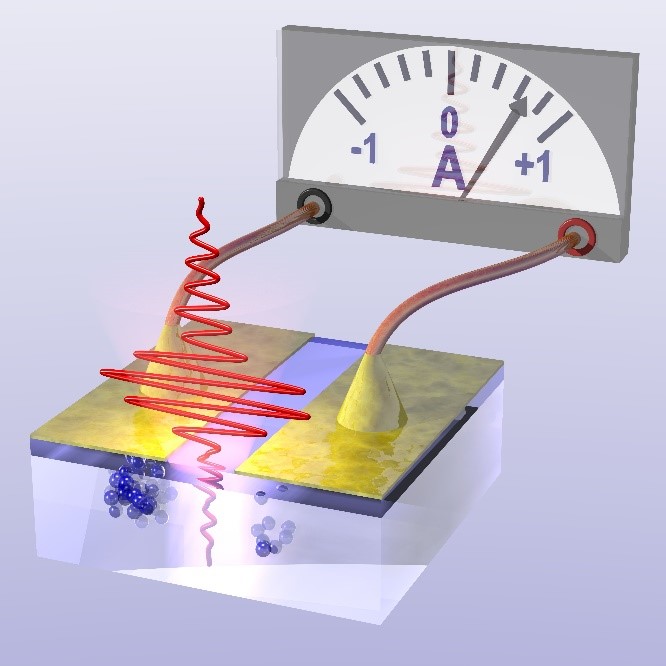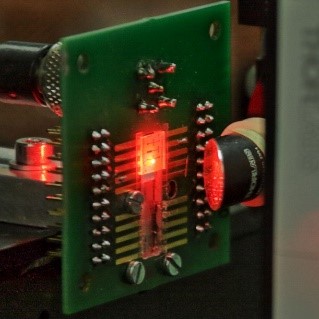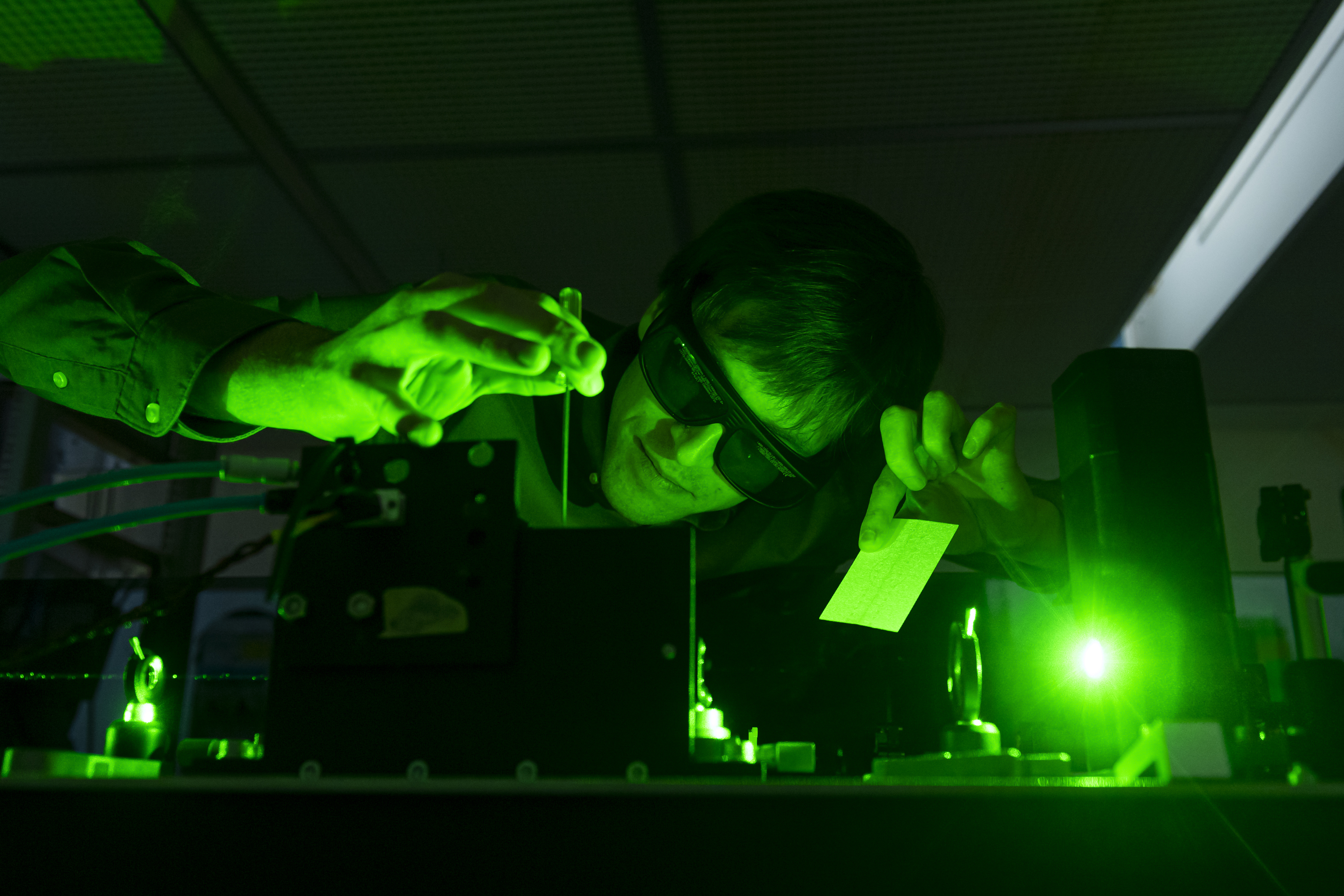Scientists at the Wigner Research Centre for Physics of ELKH have reached an important milestone on the pathway toward ultrafast optoelectronic devices. Members of the Ultrafast Nanooptics Research group led by Péter Dombi made different insulating media conductive with a state-of-the-art compact laser source. Results were published in one of the leading optics and photonics journal of the world, Optica. The Optical Society of America portal also highlighted this breakthrough.
The mobility of electrons in solid materials determines many of its properties: whether it is transparent, opaque; whether it conducts electric current or it is insulating. The conduction of electric current comes as a result of electrons moving through the material. However, the motion does not happen without collisions with surrounding atoms and the electrons are slowed down, lose their energy, and consequently, heat their surroundings. The losses and the slow reaction time of electrons in conductors is an everlasting struggle in the construction of fast and effective electrical circuits.

An ultrashort flash of laser light (red curve) impinges on glass, makes it conductive and induces charge separation there (electrons are shown with blue spheres). The direction of the current can be controlled with the shape of the laser field. (Source: Wigner Research Centre for Physics)
Researches at Wigner RCP have now made a huge step towards faster and more effective signal processing circuits. They exploited a recently discovered effect that allows to momentarily convert an insulating material (e.g. glass) into a conductor. This change of the state of matter lasts only for the time when the insulator is illuminated with an extremely short flash of laser light (a few millionths of a billionth of a second). But this time is long enough for the electrons to be transported by the action of the laser and to induce electric current in insulators. The team of scientists from the Ultrafast Nanooptics group led by Péter Dombi managed to trigger this effect in a special device with parameters adjusted to work with a simple laser oscillator and they even succeeded to control the direction of the electric current. The experiment has now been published in one of the leading optics and photonics journal of the world, “Optica”.
„It is fascinating to see in the lab, how an ultrashort laser pulse transforms insulators to a conductor within only a few femtoseconds. This effect has only been demonstrated with large, complex laser systems. Now, we managed to show this with a compact laser which is a very important step toward practical applications.” – says Péter Dombi.
They observed slight differences in the current behavior, which were explained using a mathematical model. “We applied a model to the measured data that enabled us to conclude that, although the target behaves as a conductor, the electrons do not move in a conduction band of the material in the classical sense of understanding of metals. This underpins the ultrafast nature of the observed effect, faster than conventional electronics” says Zsolt Kiss, a theoretical scientist of the group.
An electron exposed to an electric field is pushed in the direction opposite to the direction of the electric field. Therefore, when the laser radiation is delivered in extremely short pulses containing only a few field oscillations, the electron will be left with some momentum after the passage of the laser pulse. “The basics of the ultrafast current control is the following: Short pulses come with various shapes of the electric field. Some of the shapes are very asymmetric establishing a direction in space. If the electronic response of matter is fast enough, this direction in space can be translated from the laser field onto the electrons, which is the electric current,” says Václav Hanus, a postdoctoral scientist in the group and continues: “Modern laser technology enables us to control the shape of the laser field and therefore to control the electric current in the matter with the light waves as well.”

Sample under investigation, mounted in a sample holder, illuminated with laser and connected to acquisition electronics. (Source: Wigner Research Centre for Physics)
The demonstration of the insulator-conductor transition with a compact laser opened pathways for new exciting experiments, which will give more insight into this emerging technology. “Now, we are designing even smaller, nano-sized optical circuits so that we can demonstrate this fascinating effect with even smaller lasers. This is necessary for real-life applications of ultrafast optical signal processing.”
Different fused silica, gallium nitride and hafnia samples used for the experiments of the Wigner Research Centre for Physics were produced at ELI-ALPS (Szeged, Hungary), the Centre for Energy Research of ELKH and the University of Jena. Sample design and results were discussed with colleagues from the Ludwig Maximilian University in Munich.

Václav Hanus working in the laboratory of the Ultrafast Nanooptics Group in Budapest. (Source: Márton Kovács, ELKH)
The article of the Optica: www.osapublishing.org/optica



